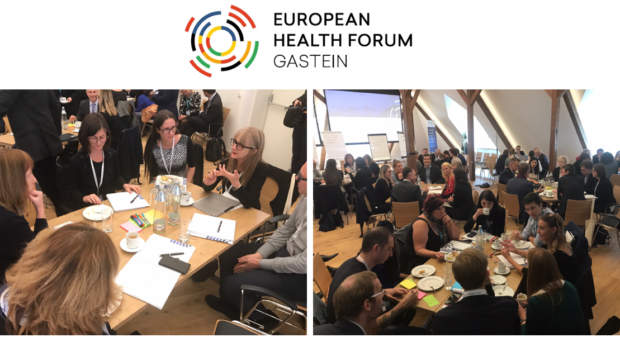
Healthcare should be provided and prioritised according to the clinical need of individuals, right? Well, in practice that depends on the individuals concerned. At least, this common tenet of healthcare policy often does not apply in the case of many of the most marginalised and underserved people in Europe, who have a higher risk of infections, non-communicable diseases and violence, and yet still face severe inequities in accessing care.
A workshop in Gastein, Austria, on 4 October 2017 brought representatives of many underserved groups – namely men who have sex with men (MSM), people who inject drugs (PWID), migrants, sex workers, prisoners and the homeless – together with policy experts and other conference participants to identify commonalities both in the barriers to care and the policy solutions.
Underserved, marginalised people are often referred to as ‘hard to reach’, whereas from the perspective of these individuals it is the services that are hard to reach
Underserved, marginalised people are often referred to as ‘hard to reach’, whereas from the perspective of these individuals it is the services that are hard to reach. Service design (or re-orientation) is crucial to take services out of hospitals and into community locations routinely used and trusted by service users – such as harm reduction centres, drop-in centres and homeless shelters. Services must be provided on a person-centred, flexible and non-judgemental basis, preferably with the involvement of peers to foster engagement and confidence among users.
Ideally such services should deliver a holistic continuum of evidence-based health promotion, prevention/harm reduction, screening, treatment and rehabilitation that also addresses non-communicable diseases, abuse and mental health problems as well as infectious diseases. And even better, these community health services should be integrated or linked (with clear signposting) to social support services so that housing problems and other drivers of poor health can be addressed, as necessary. Educational programmes are necessary to ensure that other healthcare professionals better understand the challenges faced by underserved groups, and to improve dialogue and referral to these community services.
Examples of good practice already exist, such as the Shared Addiction Care Copenhagen (SACC) project in Denmark and the Checkpoint centres in Greece and these were presented at the EFHG workshop.
Integration, or at least alignment, of health and social policy is vital, given the interdependence of poor health and social conditions
The rationale for national or regional-level funding for such services follows both from a public health basis and from the human right to health. Integration, or at least alignment, of health and social policy is vital, given the interdependence of poor health and social conditions. Policymakers must also identify and address legal or bureaucratic barriers that dis-incentivise marginalised people from accessing care, such as requirements for fixed residency status, out-of-pocket payments and systems whereby healthcare access triggers criminal and immigration law enforcement. Crucially, affected communities must be engaged in policy and service redesign and delivery to ensure the services meet their needs.
The European Union can support this paradigm shift through strategies and action plans, support for evidence-based policy (e.g. sharing of best practice), structural improvement (e.g. European Structural Funds) and co-ordinated disease surveillance, through its specialised agencies.
These issues are explored further in an article in a special Gastein edition of Eurohealth and will no doubt be a recurring them at future editions of the forum.
Comments